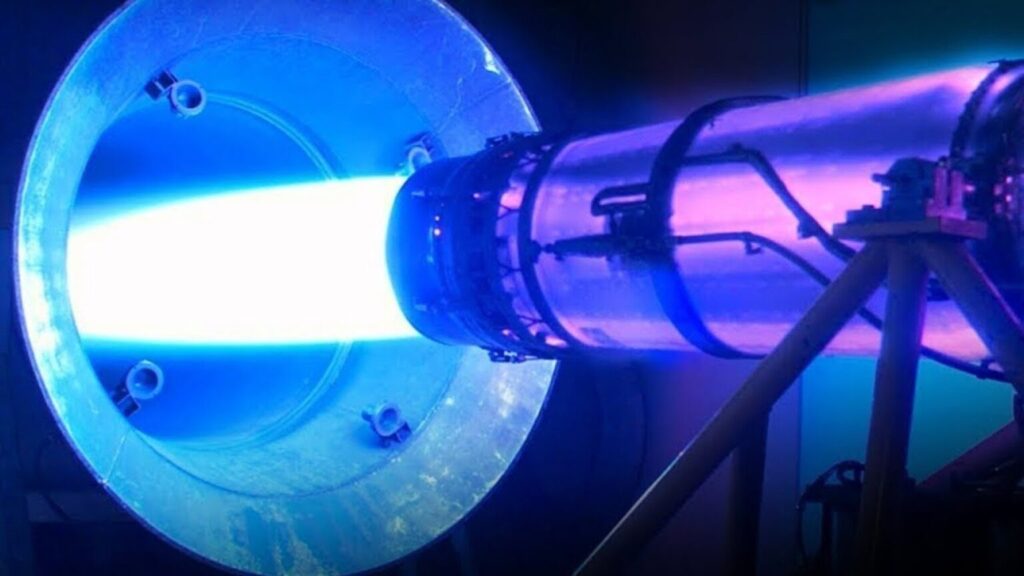In 1879, British scientist Sir William Crookes presented the idea of a revolutionary state of matter during a lecture at the British Association for the Advancement of Science. This state, which he referred to as “radiant matter,” is now recognized as plasma—the fourth state of matter. Over a century later, advancements in plasma physics have transformed his predictions into reality with the creation of an engine powered by this fascinating form of matter. The result is not just a triumph of science but a potential game-changer in fields like energy production and space exploration.
Plasma: The Fourth State of Matter
Plasma differs significantly from the traditional states of matter—solid, liquid, and gas. It occurs when a gas is energized to the point that its atoms are stripped of electrons, resulting in a soup of charged particles (ions and electrons). Plasma is the most abundant state of matter in the universe, found in stars, the sun, and even in phenomena like lightning and auroras.
What sets plasma apart is its unique properties:
1.Conductivity: Plasma conducts electricity due to the movement of charged particles.
2.Magnetic Response: It interacts with magnetic and electric fields, enabling its manipulation for various applications.
3.High Energy: Plasma can achieve temperatures far beyond what conventional systems can withstand, making it ideal for high-energy processes.
The Engine of the Future
While Crookes envisioned the transformative potential of plasma, its application as a functional engine took over a century to materialize. Recent advancements in plasma physics and engineering have made it possible to design engines that utilize plasma as a primary component.
How the Plasma Engine Works
Plasma engines generate propulsion by accelerating ionized particles using electromagnetic fields. This process differs from conventional engines that rely on chemical reactions. Plasma engines are highly efficient, lightweight, and capable of operating in environments like outer space, where traditional engines are less effective.
The most notable plasma-based propulsion systems include:
•Ion Thrusters: Used in spacecraft, these engines ionize a propellant (like xenon) and accelerate it using electric fields to generate thrust.
•Magnetoplasmadynamic (MPD) Thrusters: These utilize both electric and magnetic fields to propel plasma, providing higher thrust levels for deep-space missions.
The Creation of a Plasma Engine
The development of plasma engines has largely been driven by the need for efficient propulsion in space exploration. Traditional chemical rockets, while powerful, are inefficient for long-duration missions. Plasma engines offer a solution by providing continuous, efficient thrust over extended periods.
One of the leading examples of plasma-based propulsion is NASA’s NEXT (NASA’s Evolutionary Xenon Thruster) system. NEXT can operate for thousands of hours with minimal fuel, making it an ideal candidate for interplanetary missions.
Beyond Space Exploration
While plasma engines are making headlines in the context of space exploration, their potential applications extend beyond this field. Scientists and engineers are exploring plasma-based engines for:
1.Energy Generation: Plasma fusion reactors, such as those being developed for nuclear fusion energy, rely on controlled plasma reactions to generate clean, sustainable energy.
2.Industrial Applications: Plasma torches are already used for cutting and welding metals, and advancements could lead to more efficient manufacturing processes.
3.Environmental Benefits: Plasma technology is being explored for waste disposal, offering a clean and efficient method for breaking down toxic materials.
Challenges and Future Prospects
While plasma engines represent a groundbreaking leap in technology, several challenges remain:
•High Energy Requirements: Producing and sustaining plasma requires significant energy input, which can be a limiting factor.
•Material Limitations: The extreme temperatures of plasma demand materials that can withstand high thermal and mechanical stress.
•Cost: Developing and maintaining plasma engines involves considerable investment, which may restrict their widespread adoption.
Despite these challenges, ongoing research continues to push the boundaries of what plasma engines can achieve. Governments, private companies, and research institutions are investing heavily in this technology, driven by its potential to revolutionize energy production, transportation, and space exploration.
Impression
The journey from Sir William Crookes’ 1879 prediction to the creation of functional plasma engines highlights the transformative power of scientific discovery. What was once a theoretical concept has become a cornerstone of modern technology, with applications that promise to reshape the future.
As plasma engines continue to evolve, they will not only expand humanity’s reach into space but also offer solutions to some of the world’s most pressing challenges, from clean energy to sustainable industrial processes. This remarkable innovation stands as a testament to the enduring impact of Crookes’ vision and the relentless pursuit of progress in the field of science and engineering.
No comments yet.







